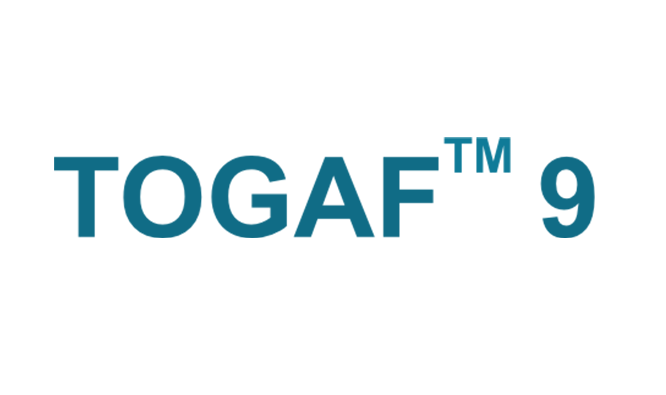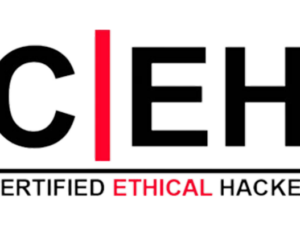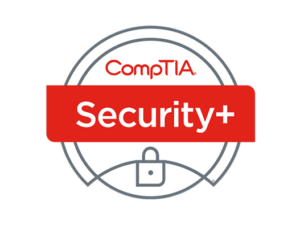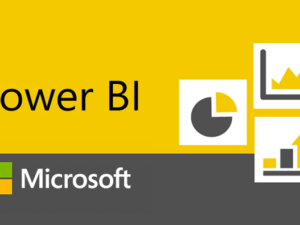TOGAF (The Open Group Architecture Framework) certification is recognized worldwide as a vital requirement for enterprise architects. The Certs Learning TOGAF 9.2 training is designed to meet the Open Group’s requirements and help you pass the exam in the first attempt. You’ll learn the process-oriented approach for architecture development and how to apply your knowledge to provide strategic context to IT projects.
TOGAF® 9 Combined level 1 and level 2 training course
Instructor
Mike
- Description
- Curriculum
- FAQ
- Reviews

By the end of this training you will learn:
- The core concepts of TOGAF, such as the Architecture Development Method (ADM), Enterprise Continuum, Architecture Repository
- Details of architecture governance, architecture views, viewpoints, stakeholders, and architecture building blocks
- Guidelines for adapting the ADM Architecture, Maturity Models, and Architecture Skills Framework
- How to get better ROI on IT assets by reducing complexity and speeding the business and IT decision cycle
- Ways to get better visibility of the organization through a mapping of business information systems and technology domains
- The step-by-step approach to transforming your IT organization with ease and in-depth clarity
The TOGAF 9 certification is ideal for anyone looking to excel in an IT organization that values seamless information flow across and between enterprises. It is best suited for:
- Enterprise Architecture Professionals
- Business Architects
- IT Architects
- Individuals who require a deeper understanding of TOGAF 9
-
1L1 00 - TOGAF-V92-M0-Course-Intro
- 00.01 Standard Courseware Version 9.2 Edition
- 00.04 TOGAF 9 Certification Levels
- 00.05 TOGAF 9 Foundation Training
- 00.06 TOGAF 9 Certified Training
- 00.07 TOGAF 9 Certification Levels
- 00.08 Paths to Certification
- 00.09 Prerequisite Knowledge
- 00.10 Course Objectives
- 00.11 Target Audience Objectives
- 00.12 TOGAF 9 Foundation Training Applicable Modules
- 00.13 TOGAF 9 Certified Training Applicable Modules
- 00.14 TOGAF 9 Certified Course Content Part1
- 00.15 Course Content Part2
- 00.16 Course Content Part 3
- 00.17 Course Content Part4
- 00.18 Course Content Part5
- 00.19 TOGAF 9 Foundation to TOGAF 9 Certified Upgrade
- 00.20-Thank you
-
2L1 01 - TOGAF V92 M1 Management Overview
- 1.01 Management Overview
- 1.02 Module Objectives
- 1.03 Agenda
- 1.04 About The Open Group
- 1.05 The Open Group Vision
- 1.06 The Open Group Mission
- 1.07 Agenda
- 1.08 Architecture Forum-Mission
- 1.09 Agenda
- 1.10 What is an Enterprise
- 1.11 What is an Architecture
- 1.12 What is Enterprise Architecture
- 1.13 Architecture Types
- 1.14 Why Enterprise Architecture
- 1.15 Pressure to Develop Enterprise Architecture
- 1.16 Business Benefits of Enterprise Architecture
- 1.17 The Importance of Governance
- 1.18 What do we mean by Governance
- 1.19 Agenda
- 1.20 What Is an Architecture Framework
- 1.21 The Value of a Framework
- 1.22 Architecture Development Method
- 1.23 Agenda
- 1.24 TOGAF Origins
- 1.25 Member End User Driven
- 1.26 TOGAF Scope
- 1.27 TOGAF Long-term Goals
- 1.28 Structure of the Standard
- 1.29 The TOGAF Standard Version 9 2 Table of Contents
- 1.30 TOGAF Components
- 1.31 TOGAF Capability Framework
- 1.32 ADM - Basic Principles
- 1.33 Preliminary Phase
- 1.34 Phase A Architecture Vision
- 1.35 Phase B Business Architecture
- 1.36 Business Architecture - Contents
- 1.37 Business Architecture - Steps
- 1.38 Phase C Information Systems Architectures
- 1.39 Data or Applications first
- 1.40 Phase D Technology Architecture
- 1.41 Phase E Opportunities and Solutions
- 1.42 Phase F Migration Planning
- 1.43 Phase G Implementation Governance
- 1.44 Phase H Architecture Change Management
- 1.45 Agenda
- 1.46 The TOGAF Library
- 1.47 TOGAF Library - Overview
- 1.48 TOGAF Library - Structure
- 1.49 Agenda
- 1.50 TOGAF Certification
- 1.51 TOGAF Foundation Target Audience
- 1.52 TOGAF Certified Target Audience
- 1.53 Agenda
- 1.54 Summary
- 1.55 Conclusion
-
3L1 02 - TOGAF V92 M2 TOGAF 9 Framework Components
- 2.01 TOGAF 9 Framework Components
- 2.02 Module Objectives
- 2.03 Key Components of the TOGAF Framework
- 2.04 The TOGAF Standard Version 9 2 Table of Contents
- 2.05 The Architecture Development Method
- 2.06 ADM Guidelines and Techniques
- 2.07 Applying Iteration to the ADM
- 2.08 Applying the ADM Across the Architecture Landscape
- 2.09 Categories of Stakeholder
- 2.10 Architecture Content Framework
- 2.11 Deliverables Artifacts and Building Blocks
- 2.12 Full Content Metamodel with Relationships
- 2.13 The Enterprise Continuum
- 2.14 Architecture Repository
- 2.15 Establishing the Architecture Capability as an Operational Entity
- 2.16 The TOGAF Library
- 2.17 TOGAF Referenc Models
- 2.18 High Level TRM
- 2.19 Detailed TRM
- 2.20 Boundaryless Information Flow
- 2.21 The Integrated Information Infrastructure Reference Model
- 2.22 Summary
- 2.23 Conclusion
- Knowledge Check
-
4L1 03 - TOGAF V92 M3 Intro ADM
- 3.01 Introduction to the Architecture Development Method ADM
- 3.02 Module Objectives
- 3.03 What Is the TOGAF ADM
- 3.04 Architecture Development Method - Process
- 3.05 Relationship to other Parts of the TOGAF Standard
- 3.06 ADM Phases
- 3.07 Architecture Forum - Mission
- 3.08 ADM Inputs and Outputs
- 3.09 Adapting the ADM
- 3.10 Governing the ADM
- 3.11 Governance Repository
- 3.12 Reasons to constrain the Scope of Architectural Activity
- 3.13 Scoping the Architecture Activity
- 3.14 Architecture Integration
- 3.15 Summary
- 3.16 Conclusion
- Knowledge Check
-
5L1 04 - TOGAF V92 M4 Enterprise Continuum
- 4.01 The Enterprise Continuum and Tools
- 4.02 Module Objectives
- 4.03 Definition of Continuum
- 4.04 Roadmap00:12
- 4.05 The TOGAF Standard Version 9 2 Components
- 4.06 Overview
- 4.07 Architecture Reuse
- 4.08 Enterprise Continuum Constituents
- 4.09 The Architecture Continuum
- 4.10 The Solutions Continuum
- 4.11 The Enterprise Continuum
- 4.12 The need for Tools
- 4.13 Tools can model the Enterprise Architecture
- 4.14 Issues in Tools Standardization
- 4.15 Summary
- 4.16 Conclusion
- Knowledge Check
-
6L1 05 - TOGAF V92 M5 Architecture Repository
- 5.01 Architecture Repository
- 5.02 Module Objectives
- 5.03 Purpose
- 5.04 Architecture Repository
- 5.05 Architecture Landscape
- 5.06 Reference Library
- 5.07 Standards Information Base
- 5.08 Standards Classification
- 5.09 Governance Log
- 5.10 Governance Log Contents
- 5.11 Architecture Requirements Repository
- 5.12 Solutions Landscape
- 5.13 Relationship to other Parts of the TOGAF Standard
- 5.14 Summary
- 5.15 Exercise
- 5.16 Conclusion
-
7L1 06 - TOGAF V92 M9 Architecture Governance
- 9.01 Architecture Governance
- 9.03 Introduction to Governance
- 9.04 Governance - Basic Principles
- 9.05 Governance and the ADM
- 9.06 Nature of Governance
- 9.07 Levels of Governance
- 9.08 An IT Governance Framework - COBIT
- 9.09 TOGAF Architecture Governance Framework
- 9.10 Conceptual Structure
- 9.11 Architecture Governance Framework - Conceptual Structure
- 9.12 Conceptual Structure
- 9.13 Organizational Structure
- 9.14 Benefits of Architecture Govenance
- 9.15 Architecture Governance in Practice
- 9.16 Architecture Board
- 9.17 Architecture Board Value
- 9.18 Architecture Board Responsibilities
- 9.19 Architecture Board Operations
- 9.20 Architecture Contracts
- 9.21 Architecture Contracts and the ADM
- 9.22 Architecture Compliance Terminology
- 9.23 Architecture Compliance
- 9.24 Architecture Compliance Reviews
- 9.25 Architecture Compliance Review Process
- 9.26 Establishing an Architecture Capability
- 9.27 Summary
- 9.28 Conclusion
- Knowledge Check
-
8L1 07 - TOGAF V92 M12 Architechture Views and Viewpoints
- 12.01 Architecture Views and Viewspoints
- 12.02 Module Objectives
- 12.03 Concepts and Definitions
- 12.04 System
- 12.05 Stakeholders
- 12.06 Concerns
- 12.07 Architecture Viewpoint synonym Viewpoint
- 12.08 Architecture Views and Viewpoints
- 12.09 What is an Architecture View
- 12.10 A Simple Example of an Architecture Viewpoint
- 12.11 A Simple Example of an Architecture View
- 12.12 Developing Architecture Views in the ADM
- 12.13 Exercise Views and Viewpoints for a Simple Airport System
- 12.14 The Architecture View Creation Process
- 12.15 Benefits
- 12.16 The Architecture View Creation Process Contd
- 12.17 Using TOGAF Artifacts
- 12.18 Catalogs
- 12.19 Matrices
- 12.20 Stakeholder Map Matrix
- 12.21 Diagrams
- 12.22 Example Business Footprint Diagram
- 12.23 TOGAF Standard Version 9 2 Artifacts
- 12.24 Summary
- 12.25 Exercise
- 12.26 Conclusion
- Knowledge Check
-
9L1 08 - TOGAF V92 M13 Building Blocks
- 13.01 Building Blocks
- 13.02 Module Objectives
- 13.03 Building Block Characteristics
- 13.04 Building Blocks
- 13.05 Architecture Building Blocks ABBs
- 13.06 ABB Specifications
- 13.07 Solution Building Blocks SBBs
- 13.08 SBB Specifications
- 13.09 Building Blocks and the ADM
- 13.10 Building Block Design
- 13.11 Requirements Management
- 13.12 Architecture Patterns
- 13.13 Conclusion
- Knowledge Check
-
10L1 09 - TOGAF V92 F6 ADM Phases Level 1
- F6.01 ADM Phases Level 1
- F6.02 Module Objectives
- F6.03 Preliminary Phase
- F6.04 Objectives in detail
- F6.05 Approach
- F6.06 Phase A Architecture Vision
- F6.07 Objectives
- F6.08 Approach
- F6.09 Business Scenarios
- F6.10 What is a Business Scenario
- F6.11 Roadmap
- F6.12 Business Scenarios and the ADM
- F6.13 Phase B Business Architecture
- F6.14 Objectives
- F6.15 Approach General
- F6.16 Developing the Baseline Description
- F6.17 Applying Business Capabilities
- F6.18 Applying Value Streams
- F6.19 Mapping Value Streams
- F6.20 Applying the Organization Map
- F6.21 Applying Business Modeling
- F6.22 Using the Architecture Repository
- F6.23 Phase C Information Systems Architectures
- F6.24 Data or Applications first
- F6.25 Information Systems Architectures Objectives
- F6.26 Approach
- F6.27 Top-Down Design vs Bottom-up Implementation
- F6.28 Data-Driven Sequence Implementation
- F6.29 Architecture Repository
- F6.30 Considerations for the Data Architecture
- F6.31 Phase D Technology Architecture
- F6.32 Objectives
- F6.33 Approach
- F6.34 Phase E Opportunities and Solutions
- F6.35 Objectives
- F6.36 Approach
- F6.37 Phase F Migration Planning
- F6.38 Objectives
- F6.39 Approach
- F6.40 Phase G Implementation Governance
- F6.41 Phase G Objectives
- F6.42 Approach
- F6.43 Phase H Architecture Change Management
- F6.44 Objectives
- F6.45 Approach
- F6.46 Exercise Drivers for Architecture Change
- F6.47 Change Management Process
- F6.48 Maintenance versus Redesign
- F6.49 Change Impact Exercise
- F6.50 ADM Requirements Management
- F6.51 Objectives
- F6.52 Approach
- F6.53 Resources
- F6.54 Volère Requirements Specification Template
- F6.55 Conclusion
-
11L1 10 - TOGAF V92 F7 Guidelines and Techniques Level 1
- F7.1 ADM Guidelines and Techniques
- F7.2 Module Objectives
- F7.3 Using the TOGAF ADM in the Context of a Specific Architectural Style
- F7.4 Using the TOGAF ADM in the Context of
- F7.5 Guidelines
- F7.6 Techniques
- F7.7 Question
- F7.8 Architecture Principles
- F7.9 The need for Architecture Principles
- F7.10 Template
- F7.11 Example
- F7.12 Example Self Serve
- F7.13 What makes a good set of Architecture Principles
- F7.14 What is a Business Scenario
- F7.15 What is a good Business Scenario
- F7.16 The use of Business Scenarios in the ADM
- F7.17 Gap Analysis
- F7.18 Example
- F7.19 Interoperability
- F7.20 Interoperability and the ADM
- F7.21 Examples
- F7.22 The Business Transformation Readiness Assessment
- F7.23 Business Transformation Readiness and the ADM
- F7.24 Example
- F7.25 Risk Management in the ADM
- F7.26 Example
- F7.27 Capability based planning
- F7.28 Capabilities
- F7.29 Summary
- F7.30 Exercise
- F7.31 Conclusion
-
12L1 11 - TOGAF V92 F11 ADM Deliverables Level 1
- F11.01 ADM Deliverables Level 1
- F11.02 Module Objectives
- F11.03 Roadmap
- F11.04 The role of Architecture Deliverables
- F11.05 Architecture Deliverables
- F11.06 Request for Architecture Work
- F11.07 Statement of Architecture Work
- F11.08 Architecture Vision
- F11.09 Communications Plan
- F11.10 Architecture Definition Document
- F11.11 Architecture Requirements Document
- F11.12 Architecture Roadmap
- F11.13 Conclusion
-
13L1 12 - TOGAF V92 F12 Reference Models
- F12.01 TOGAF Reference Models
- F12.02 Module Objectives
- F12.03 Roadmap
- F12.04 TOGAF Foundation Architecture
- F12.05 The Architecture Continuum
- F12.06 TRM Components
- F12.07 Summary of the TRM
- F12.08 A common problem
- F12.09 Customer problem statement
- F12.10 A Shared Vision
- F12.11 How Important
- F12.12 Integrated Information Infrastructure Reference Model
- F12.13 The Architecture Continuum
- F12.14 TOGAF TRM Orientations
- F12.15 Boundaryless Information Flow Focus
- F12.16 Integrated Information Infrastructure Reference Model - High-level Model
- F12.17 Components of the III-RM
- F12.18 Summary of the III-RM
- F12.19 Conclusion
- Knowledge Check
-
14L1 13 - TOGAF V92 F13 Certification
- F13.01 The TOGAF Certification for People Program
- F13.02 Module Objectives
- F13.03 TOGAF Certification for People
- F13.04 TOGAF 9 Certification Levels
- F13.05 Level 1 - TOGAF 9 Foundation Target Audience
- F13.06 Level 2 - TOGAF 9 Certified Target Audience
- F13.07 Paths to Certification
- F13.08 Components
- F13.09 Level 1 Learning Units
- F13.10 Level 2 Learning Units
- F13.11 Level 1 Exam Requirements
- F13.12 Level 2 Exam Requirements
- F13.13 Level 2 Stepwise Development
- F13.14 Level 2 Direct
- F13.15 Combined Part 1 and 2 Examination
- F13.16 Certification
- F13.17 Conclusion
What is the last date for registration to appear for TOGAF Exam?
The examination date can be decided by the candidate, once he or she registers with Pearson VUE.
How long does it take to get TOGAF exam results?
Usually you will receive notification of your pass or fail status within a few minutes of completing your exam in the form of a printed score report. In addition, you can obtain your score reports from within your Open Group Pearson VUE testing account. Occasionally, if a score report is unable to be printed, you will only receive the electronic copy. A result shown as “pending” indicates that Pearson VUE is still generating the score report, which may take a few hours.
I have a TOGAF 9 certification. How do I update my TOGAF 9.1 certification to the current version?
The TOGAF Standard, Version 9.2, is an update to the previous version providing improved guidance, correcting errors, improving the document structure, and removing obsolete content. Key enhancements made in this version include updates to the Business Architecture and the Content Metamodel. If you achieved TOGAF 9 certification to the earlier conformance requirements then you remain certified.
How do I register for a TOGAF exam session on Certs Learning?
Learners need to register on the Pearson VUE website with an exam voucher provided by Certs Learning to schedule the exam.
Do I need a background in IT to take this TOGAF course?
TOGAF is a framework for enterprise architecture that provides an approach for designing, planning, implementing, and governing an enterprise information technology architecture. An IT background is not necessary to take the exam. If you don`t have an IT background, our training will help you understand the course material better and simplify the journey towards being TOGAF certified.
Will my TOGAF 9 certificate expire?
TOGAF certification is valid for lifetime and doesn`t need any renewal.
What if I fail the TOGAF Exam?
If you fail the examination, you need to wait at least one month to retake the exam. You will need to pay additional fees to retake the TOGAF exam.
Who are the instructors for the live classroom training?
All of our highly qualified trainers are TOGAF 9 certified with more than 14 years of experience in implementing TOGAF framework.
Is exam fee included in the course fee?
Yes. The exam fee is included in the course. An Exam Voucher with one year validity will be provided with the training.
What certification will I receive after completing the training?
After successful completion of the training, you will be awarded the course completion certificate. Once you clear the exam you will then receive the TOGAF 9 certification from The Open Group.
Do you provide assistance for the exam booking process?
Yes, we do help you in finding the nearest Prometric Centre for your exam.
How many questions are there in the TOGAF certification exam?
TOGAF part 1 Foundation (Duration 60 minutes)
40 multiple choice questions (Closed Book)
Pass mark – 55%
TOGAF part 2 Certification (Duration 90 minutes)
8 Scenario based questions (Open Book)
Pass mark – 60%
40 multiple choice questions (Closed Book)
Pass mark – 55%
TOGAF part 2 Certification (Duration 90 minutes)
8 Scenario based questions (Open Book)
Pass mark – 60%
How does the online classroom training work?
Online classroom training for TOGAF 9 is conducted via live streaming by a TOGAF 9 certified trainer with over 15 years of work experience. The class is attended by a global audience to enrich your learning experience.
Is this live training, or will I watch pre-recorded videos?
All of the classes are conducted live online. They are interactive sessions that enable you to ask questions and participate in discussions during class time. We do, however, provide recordings of each session you attend for your future reference.
What tools do I need to attend the training sessions?
The tools you’ll need to attend training are:
Windows: Windows XP SP3 or higher
Mac: OSX 10.6 or higher
Internet speed: Preferably 512 Kbps or higher
Headset, speakers and microphone: You’ll need headphones or speakers to hear instruction clearly, as well as a microphone to talk to others. You can use a headset with a built-in microphone, or separate speakers and microphone.
Windows: Windows XP SP3 or higher
Mac: OSX 10.6 or higher
Internet speed: Preferably 512 Kbps or higher
Headset, speakers and microphone: You’ll need headphones or speakers to hear instruction clearly, as well as a microphone to talk to others. You can use a headset with a built-in microphone, or separate speakers and microphone.
I’d like to learn more about this training program. Who should I contact?
Contact us using the form on the right of any page on the Certs Learning website, or select the Live Chat link. Our customer service representatives can provide you with more details.
Who are our Faculties and how are they selected?
All of our highly qualified trainers are ITIL-certified, with more than 15 years of experience in training and working in the IT domain. Each of them have gone through a rigorous selection process which includes profile screening, technical evaluation, and a training demo before they are certified to train for us. We also ensure that only those trainers with a high alumni rating continue to train for us.
What is Global Teaching Assistance?
Our teaching assistants are a dedicated team of subject matter experts here to help you get certified in your first attempt. They engage students proactively to ensure the course path is being followed and help you enrich your learning experience, from class onboarding to project mentoring and job assistance. Teaching Assistance is available during business hours.
Benefits of TOGAF Certification in Enterprise Architecture
Listed here are some broad aspects of how TOGAF can benefit organizations.
Ease Of Implementation
Ease Of Use:
Global Standard:
Authentic:
Procedural:
Flexible:
Versatility:
Uses Tested Ideas – Open Systems Framework:
Intelligent Procurement Specification:
Popularity:
No Dearth Of Training:
Freely Available Public Domain Material:
Frees Up Licensing Costs For Other Frameworks:
Up-To-Date Body Of Knowledge:
Open Systems Implementation:
TOGAF For Organizational Improvement:
Why Should I Get TOGAF Certified?
For efficient utilization of the TOGAF framework, knowing how to beneficially implement TOGAF will prove profitable for organizations that wish to adopt this framework in its functioning, and TOGAF certified architects will continue to remain in high demand.
1. A certmag.com survey ranks TOGAF in the ninth position among the top 20 highest paying certifications in 2015. This is not surprising considering such organizations as IBM, HP, Oracle, Deloitte, Capgemini, CISCO and other leading giants are implementing TOGAF® methodologies to transform their businesses, thereby increasing the job opportunities and the subsequent demands for TOGAF certified architects.
2. Data from Indeed.com demonstrates why TOGAF is such a sought-after domain for certification by IT professionals:
From these figures, it is clear that:
TOGAF professionals stand a great chance at breaking the $100,000\year barrier;
Professionals with a TOGAF certification are among the highest-paid professionals in the IT industry.
3. A TOGAF certification enables professionals to acquire specific knowledge about the standard framework and methods of enterprise architecture and helps validate their proven knowledge of the framework.
4. The spectrum of skills that professionals can build and develop through TOGAF certification is also vast, and includes: business skills comprising of business cases, processes, strategic planning, Enterprise Architecture skills comprising of modelling, system integration, applications and role design, Project Management skills, certain legal knowledge into the data protection laws, contract law, procurement laws, etc., and also some of the generic skills such as leadership, team-building and soft-skills.
Ease Of Implementation
Ease Of Use:
Global Standard:
Authentic:
Procedural:
Flexible:
Versatility:
Uses Tested Ideas – Open Systems Framework:
Intelligent Procurement Specification:
Popularity:
No Dearth Of Training:
Freely Available Public Domain Material:
Frees Up Licensing Costs For Other Frameworks:
Up-To-Date Body Of Knowledge:
Open Systems Implementation:
TOGAF For Organizational Improvement:
Why Should I Get TOGAF Certified?
For efficient utilization of the TOGAF framework, knowing how to beneficially implement TOGAF will prove profitable for organizations that wish to adopt this framework in its functioning, and TOGAF certified architects will continue to remain in high demand.
1. A certmag.com survey ranks TOGAF in the ninth position among the top 20 highest paying certifications in 2015. This is not surprising considering such organizations as IBM, HP, Oracle, Deloitte, Capgemini, CISCO and other leading giants are implementing TOGAF® methodologies to transform their businesses, thereby increasing the job opportunities and the subsequent demands for TOGAF certified architects.
2. Data from Indeed.com demonstrates why TOGAF is such a sought-after domain for certification by IT professionals:
From these figures, it is clear that:
TOGAF professionals stand a great chance at breaking the $100,000\year barrier;
Professionals with a TOGAF certification are among the highest-paid professionals in the IT industry.
3. A TOGAF certification enables professionals to acquire specific knowledge about the standard framework and methods of enterprise architecture and helps validate their proven knowledge of the framework.
4. The spectrum of skills that professionals can build and develop through TOGAF certification is also vast, and includes: business skills comprising of business cases, processes, strategic planning, Enterprise Architecture skills comprising of modelling, system integration, applications and role design, Project Management skills, certain legal knowledge into the data protection laws, contract law, procurement laws, etc., and also some of the generic skills such as leadership, team-building and soft-skills.
Till when can I purchase exam voucher from Certs Learning?
Your exam voucher is included in the price of this course. However, you must book your exam within one year from the date you purchased this course. In case of any change of exam fee by the certification body within the one year, you will be liable to pay the difference of amount to Simplilearn. If you did not book the exam within one year from purchase, you will need to buy the voucher again as per the actual price.
Please, login to leave a review







